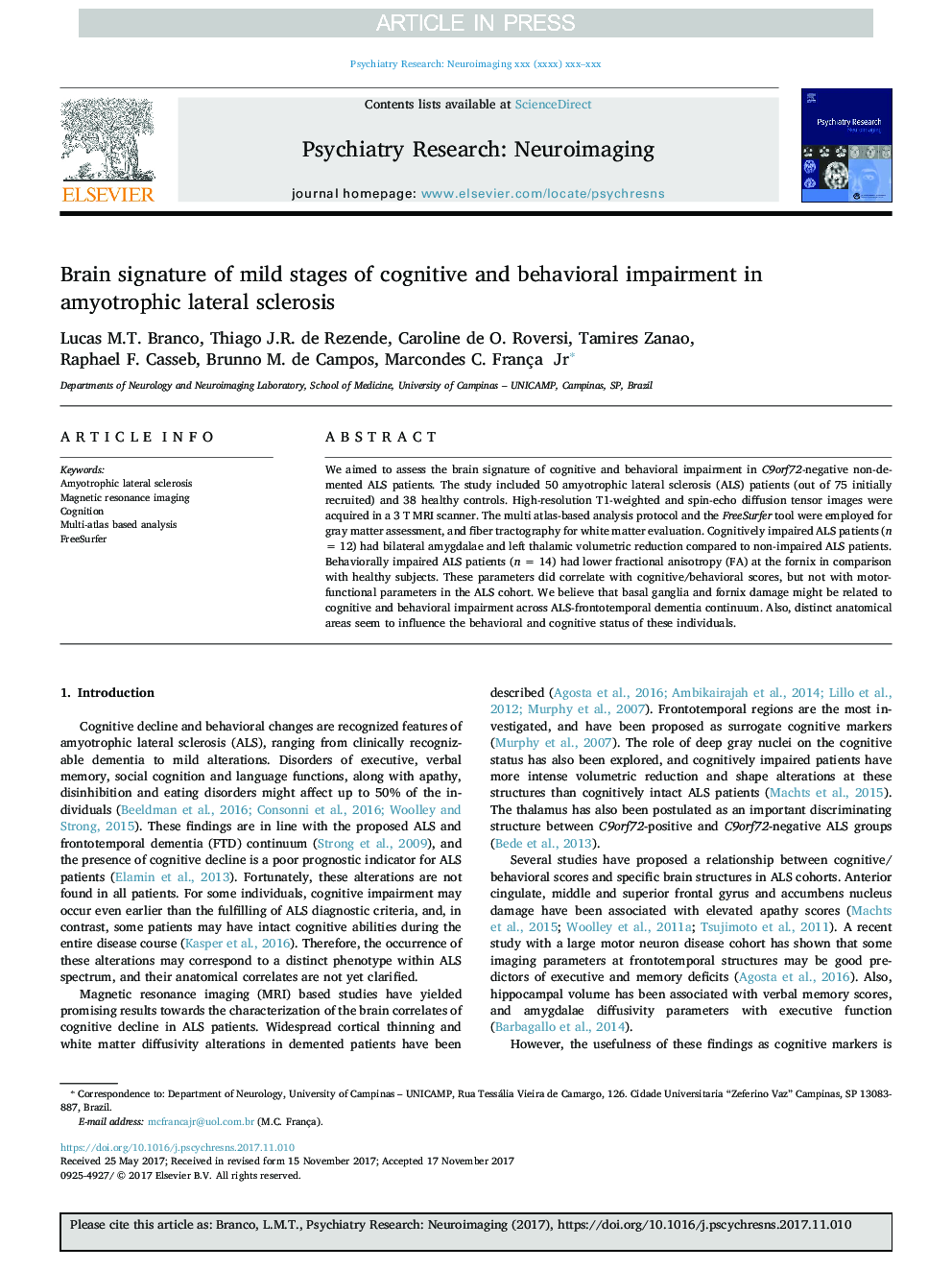| Article ID | Journal | Published Year | Pages | File Type |
|---|---|---|---|---|
| 6816999 | Psychiatry Research: Neuroimaging | 2018 | 7 Pages |
Abstract
We aimed to assess the brain signature of cognitive and behavioral impairment in C9orf72-negative non-demented ALS patients. The study included 50 amyotrophic lateral sclerosis (ALS) patients (out of 75 initially recruited) and 38 healthy controls. High-resolution T1-weighted and spin-echo diffusion tensor images were acquired in a 3Â T MRI scanner. The multi atlas-based analysis protocol and the FreeSurfer tool were employed for gray matter assessment, and fiber tractography for white matter evaluation. Cognitively impaired ALS patients (n = 12) had bilateral amygdalae and left thalamic volumetric reduction compared to non-impaired ALS patients. Behaviorally impaired ALS patients (n = 14) had lower fractional anisotropy (FA) at the fornix in comparison with healthy subjects. These parameters did correlate with cognitive/behavioral scores, but not with motor-functional parameters in the ALS cohort. We believe that basal ganglia and fornix damage might be related to cognitive and behavioral impairment across ALS-frontotemporal dementia continuum. Also, distinct anatomical areas seem to influence the behavioral and cognitive status of these individuals.
Related Topics
Life Sciences
Neuroscience
Biological Psychiatry
Authors
Lucas M.T. Branco, Thiago J.R. de Rezende, Caroline de O. Roversi, Tamires Zanao, Raphael F. Casseb, Brunno M. de Campos, Marcondes C. Jr,
